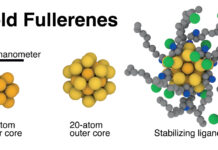
An international team of researchers has found a way to make solar hydrogen generation more efficient in microgravity environments. In their paper published in the journal Nature Communications, the group describes what they learned from experiments with a photoelectrochemical cell falling in a drop tower.
In order to go very far in space, future astronauts will need some means for creating their own air and fuel—carrying enough of any of them for very long trips would prove impractical. Currently, astronauts aboard the ISS generate oxygen using a two-stage process. The first stage involves generating electricity using solar cells. In the second stage, the electricity is used to carry out an electrolysis technique with water. The researchers note that this process works, but it is inefficient. In this new effort, their goal was to improve the efficiency of the electrolysis technique used.
The researchers explain that the current process involves using an electrode made of a semiconductor that is light absorbing: Typically, a p-type indium phosphide. The electrode is then coated with a thin layer of a rhodium catalyst. As has been noted in the past, the inefficiency lies in the problem of hydrogen bubbles adhering to the surface of the electrodes, rather than bobbling up off them (due to buoyancy) as occurs on Earth. To get them to bobble up in a microgravity environment, the researchers changed the texture of the electrode. Rather than the normally flat surface, the team forced the rhodium into peaks and valleys, with the distance between them too far for the hydrogen bubbles to sit in. That meant they had to sit on the peaks, which left less contact between the bubbles and the surface.
Read more: Making solar hydrogen generation more efficient in microgravity
thumbnail courtesy of phys.org











